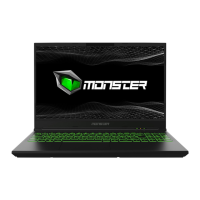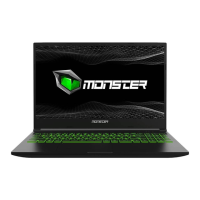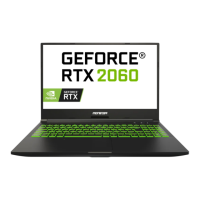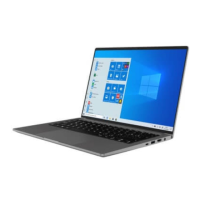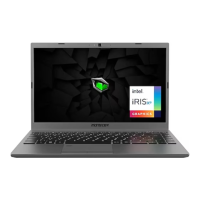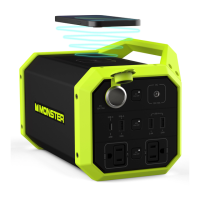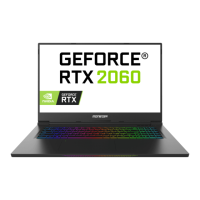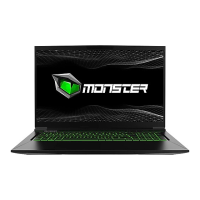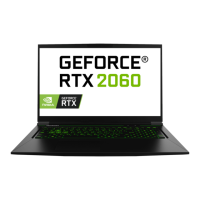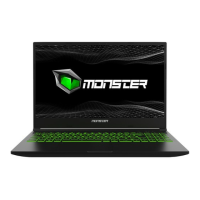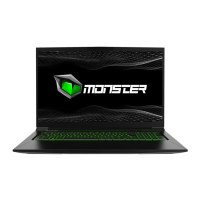Do you have a question about the Monster ABRA A5 V15.5 and is the answer not in the manual?
Details CE compliance, EU directives, operating temperature limits, and battery disposal.
Provides general safety guidelines regarding pressure, vents, liquids, magnetic fields, and hearing loss.
Details physical characteristics, processor, graphics card, memory, storage, and webcam specifications.
Covers I/O ports, audio, input devices, display, communication, power, and battery details.
Instructions on connecting the AC adapter, opening the display, and powering on the notebook.
Identifies key components of the notebook in a top-open view.
Detailed explanations of the webcam, LEDs, microphone, screen, buttons, and input devices.
Illustrates the front and bottom sides of the notebook, highlighting vents and speakers.
Shows internal storage and RAM layout, and external ports on the right side.
Details the ports located on the left and back sides of the notebook.
Recommends using the AC adapter for the first time and charging the battery.
Explains colored hot keys and their functions for keyboard users.
Lists further keyboard hotkeys for brightness control and Windows charm functions.
Explains how to use the touchpad and its buttons for cursor movement and selection.
Details common touchpad gestures like clicking, scrolling, zooming, and multitasking.
Explains when and why BIOS setup might be necessary for system configuration.
Guides users on accessing BIOS utility by pressing specific keys during POST.
Introduces the main BIOS menus including Main, Advanced, Security, Boot, and Exit.
Details system information, time, date, processor, and memory details.
Covers OS support, SATA, NVMe, virtualization, RAID, and overclocking settings.
Focuses on password settings, administrator/user passwords, and secure boot options.
Configures boot sequence, boot priorities, and hard disk/USB drive order.
Covers saving changes, discarding changes, and restoring default BIOS settings.
| Display Size | 15.6 inches |
|---|---|
| RAM | 8GB / 16GB / 32GB DDR4 3200MHz |
| Storage | 250GB / 500GB / 1TB M.2 SSD |
| Operating System | Windows 10 Home |
| Display Resolution | 1920 x 1080 |
| Display | 15.6 inches, 1920 x 1080 |
| Battery | 3-cell Li-ion |
